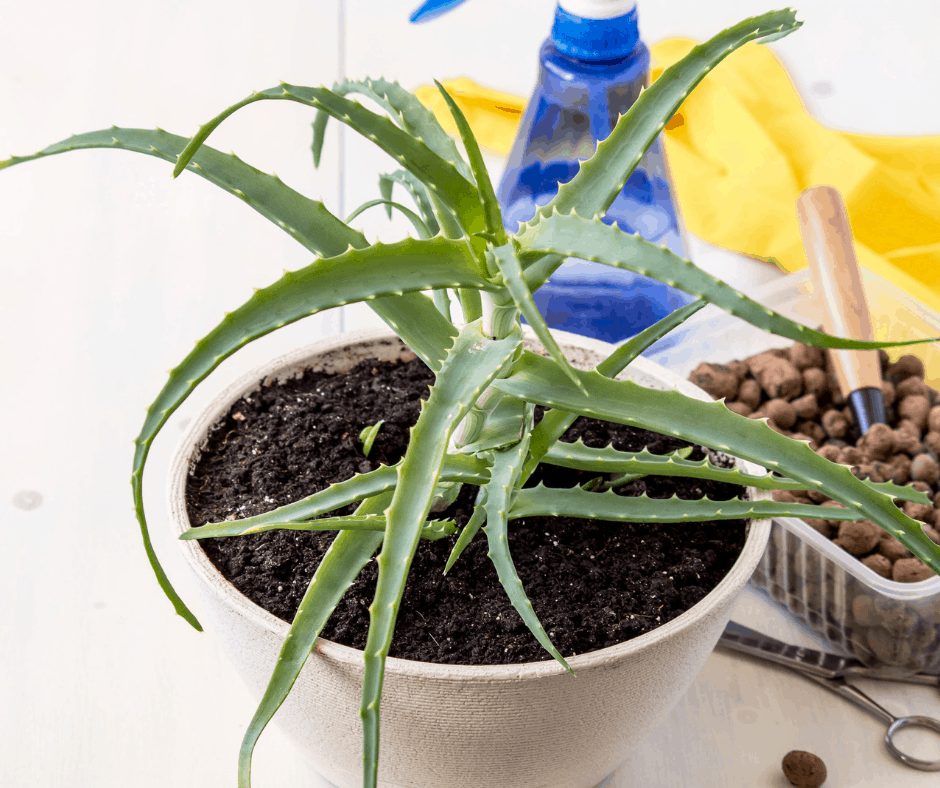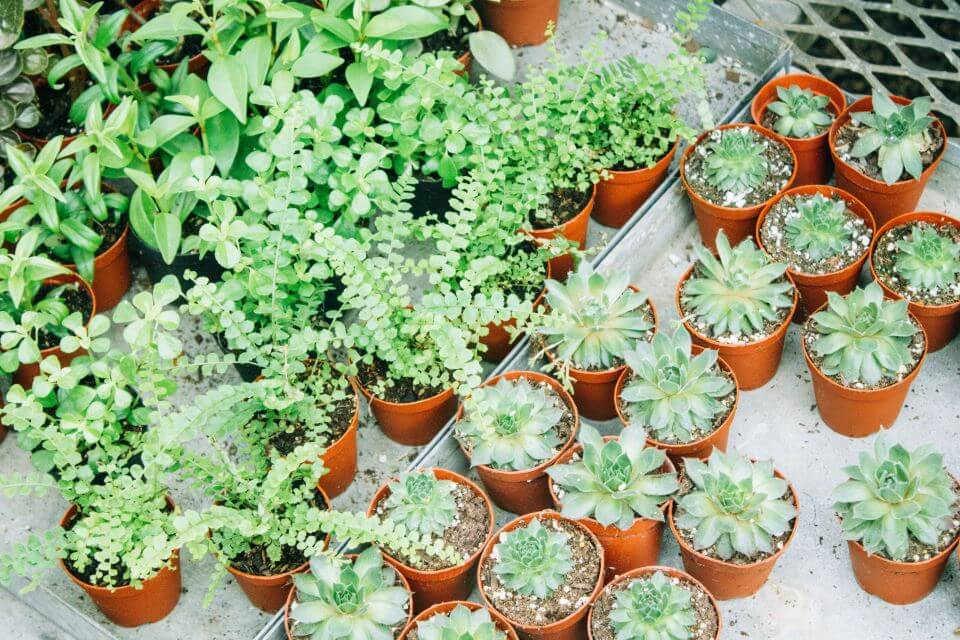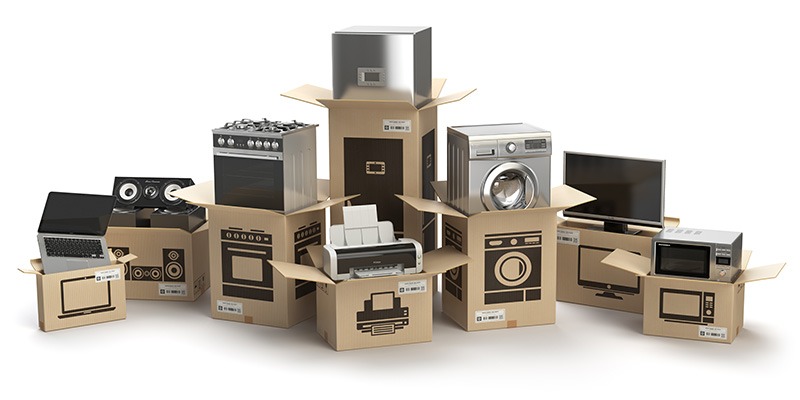Keeping Plants Alive During a Big Move
Moving house can be a stressful experience for plants, as they are sensitive to environmental changes. However, with some planning and care, you can help your plants survive the move and thrive in their new home. Here are some top tips to keep plants alive when moving house:
Plan ahead before moving plants
Start by identifying which plants you want to take with you and which you want to give away. Research the best time of year to move your plants, considering the weather conditions and the availability of transport.
Prune your tropical plants
Do this a few weeks before moving day to reduce their size and make them more manageable. This will also help stimulate new growth and make your plants more resilient.
Pack potted plants carefully
Use sturdy boxes or containers to pack them, ensuring enough room for them to breathe. Use packing materials like bubble wrap or newspaper to protect your plants from damage during transit.
Keep a schedule for watering plants
This will ensure that they are well-hydrated. However, avoid overwatering your plants, which can lead to root rot.
Keep your plants in a stable environment
During the move, try to keep your plants in a tough environment to minimise stress. Keep them away from direct sunlight, extreme temperatures, and drafts.
Unpack your plants first
When you arrive at your new home, unpack them first to ensure they get the care they need. Give them a thorough watering and place them in a suitable location with the right light.
Give your large plants time to acclimate
They may adjust to their new environment. Monitor them closely and make any necessary adjustments to their care routine, such as watering, fertilising, or repotting.
Remember, plants are living beings that require attention and care, so be patient and attentive to their needs.
What are the Hardest Plans to Nurture When Relocating?
Some plants are more delicate and challenging to nurture than others when relocating. Here are some of the hardest plants to nurture when relocating:
- Large trees and shrubs: Large trees and shrubs are challenging to relocate because of their size and root structure. It requires careful planning and expertise to transplant these plants safely without damaging their roots.
- Orchids: Orchids are known for their delicate and sensitive nature. They require a stable environment with a consistent temperature and humidity level, making it hard to relocate them. The slightest disturbance can cause damage to their roots and flowers.
- Ferns: Ferns require high humidity levels to thrive, making it hard to maintain their growth during relocation. They are also sensitive to changes in temperature and light, which can cause them to wilt.
- Succulents: Succulents are known for their water-storing ability, making them hard to kill. However, they are prone to root rot if overwatered or exposed to excess moisture. During relocation, it’s essential to ensure that they are not overwatered or exposed to extreme temperatures.
- Bonsai trees require careful maintenance and care to thrive, making them challenging to relocate. It requires expertise to prune and correctly shape these trees’ roots and foliage.When relocating any plant, it’s essential to consider each plant’s specific needs and requirements to ensure its survival. With proper planning and care, even the most delicate plants can survive the move and thrive in their new environment.
Are There Plants That Can Thrive in Any Environment?
No plant can thrive in any environment, requiring water, light, temperature, and nutrients to grow and survive. However, some plants are more adaptable and can survive in various environments. Here are some plants that are known for their hardiness and adaptability:
- Snake Plant: Also known as Mother-In-Law’s Tongue, snake plants are easy to care for and can survive in low light and dry conditions.
- ZZ Plant: The ZZ plant is a low-maintenance plant that can thrive in both low and bright light and is tolerant of drought and low humidity.
- Pothos: Pothos is a trailing plant that is tolerant of low light and can survive under fluorescent light. It is also relatively drought-resistant and can grow in various soil types.
- Spider Plant: Spider plants are resilient and can adapt to various conditions. They prefer bright, indirect light but can also survive in low light and tolerate dry conditions.
- Peace Lily: Peace lilies are easy to care for and thrive in low-light conditions. They prefer consistently moist soil, but they can tolerate occasional dryness.
- Chinese Evergreen: Chinese evergreens are low-maintenance plants that can survive in low to bright light and tolerate dry air. They are also relatively pest-resistant. These plants are a great choice if you want to create an attractive indoor garden that is easy to care for and can adapt to various environments.
While no plant can thrive in any environment, these plants are known for their adaptability and resilience and can survive in various conditions. However, it’s still important to provide them with the best care, including appropriate watering, lighting, and soil conditions, to ensure their optimal growth and health.
How Do Moving Houseplants Affect Them?
Plants can react differently to being relocated depending on the species of the plant, its size, the conditions of the move, and how well it is cared for before, during, and after the relocation.
Transplant shock
When plants are relocated, they may experience transplant shock, a natural response to the stress of being uprooted and moved. Transplant shock can cause wilting, yellowing of leaves, and slowed growth as the plant adapts to its new environment.
Dropping leaves
Some plants may drop leaves or even go dormant shortly after being relocated. This natural stress response may be due to changes in light, temperature, or humidity.
New growth
Some plants may respond positively to being relocated by producing new growth. This is often a sign that the plant is adapting well to its new environment and is receiving the right care.
Pest and disease susceptibility
Plants stressed by being relocated may be more susceptible to pests and diseases. It’s important to monitor relocated plants closely for any signs of pests or diseases and take appropriate measures to prevent or treat them.
Relocating plants can be a stressful experience for both the plant and the gardener. However, with proper planning, care, and consideration of the specific needs of each plant, successful relocation is possible. Keep an eye out for signs of transplant shock or pest infestations, and provide the best care to ensure your plants thrive in their new environment.
How best to acclimatise a relocated live plant?
Acclimatising plants after the relocation are important to ensure their survival and continued growth. Here are some tips on how to acclimatise relocated plants:
Gradually introduce small plants to their new environment.
When relocating plants, it’s essential to introduce them gradually to their new environment. Start by placing the plants inside a shaded or sheltered area and gradually increase their exposure to sunlight or wind over several days.
Water the plant regularly.
Water the plant regularly, ensuring the soil remains moist but not soggy. Watering frequency may need to be adjusted based on the plant’s specific requirements and the environmental conditions of the new location.
Monitor the plant closely.
After relocation, monitoring the plant closely for any signs of stress or damage is important. Look for signs of wilting, yellowing leaves, or insect infestations.
Fertilise the plant appropriately.
Fertilising the plant can help it acclimatise to its new environment. Use a balanced fertiliser or one specific to the plant’s needs and follow the recommended application rates.
Provide appropriate light and temperature.
Ensure that the plant is placed in an appropriate light and temperature area for its specific needs. Consider providing shade or protection if the plant is sensitive to direct sunlight or extreme temperatures.
Prune the plant if necessary.
If the plant has undergone significant stress during the move, consider pruning it to help it recover. This can also help promote new growth and help the plant acclimatise to its new environment.
The key to acclimatising relocated plants is providing them with the best care, including appropriate watering, fertilising, and environmental conditions. Most plants can adapt and thrive in their new location with proper care.
Can professional removalists help relocate house plants?
Yes, professional removalists can help relocate plants, and it’s a good idea to consider hiring a professional to ensure that your plants are properly cared for during the move. Here are some of the ways that professional removalists can help with plant relocation:
Pre-move preparation
Professional removalists can advise you on how to prepare your plants for the move, including how to pack and transport them safely. They can provide packing materials such as boxes, bubble wrap, and foam, as well as advice on how to avoid damage to the plants during the move.
Specialised equipment
Professional removalists have specialised equipment, such as dollies and hand trucks, that can safely transport plants. They can also provide custom crating or packing for larger plants that require additional support.
Transport and Delivery
Professional removalists can transport plants to their new location safely and efficiently, ensuring that they are protected from temperature fluctuations, wind, and other environmental factors during the journey. They can also deliver the plants to the new location, help you unpack them, and get them settled in their new environment.
Expert advice
Professional removalists have experience transporting plants and can provide expert advice on caring for your plants during and after the move. They can advise you on how to acclimatise your plants to their new environment and provide tips on watering, fertilising, and other care needs.
Hiring a professional removalist company like Careful Hands Movers can help ensure that your plants are safely and properly relocated, minimising the stress and damage that can occur during a move. It’s a good idea to consult with a removalist to determine the best way to transport your plants and ensure their continued health and growth.
Moving Tips and Tricks
Discover efficient packing strategies, organisation hacks, and expert advice to streamline your moving process and ensure a smooth transition.

How to Reserve Parking Spaces for Removalists: A Step-by-Step Guide
Relocating to a new residence is both an exciting and stressful adventure. Although it’s an opportunity for renewal and reinvention, the process often involves a lot of confusion and stress. Parking the removal truck might be a major headache, especially if you live in a dense urban area or a high-density apartment building.
View ArticleOur Removalist Services
- Removalists Sydney
- Removalists Melbourne
- Removalists Melbourne to Sydney
- Removalists Sydney to Melbourne
- Removalists Melbourne to Adelaide
- Removalists Adelaide to Melbourne
- Removalists Melbourne to Canberra
- Removalists Canberra to Melbourne
- Removalists Melbourne to Brisbane
- Removalists Brisbane to Melbourne
















